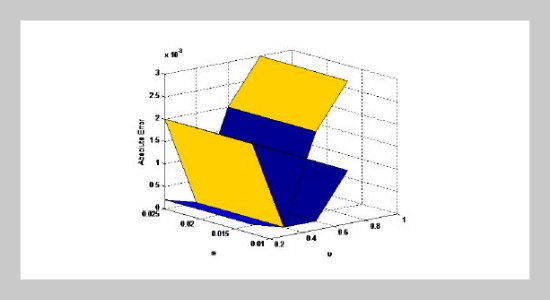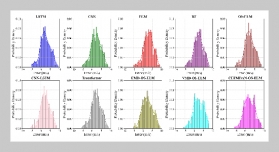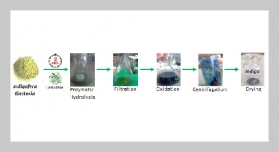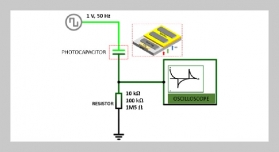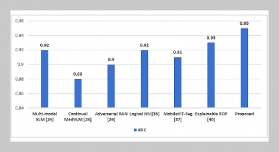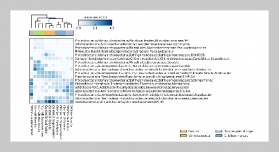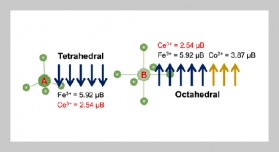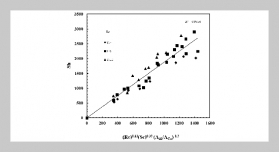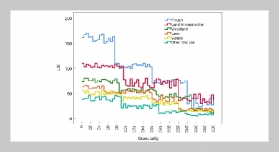REFERENCES
- [1] S. Noeiaghdam and E. K. Ghiasi. An efficient method to solve the mathematical model of HIV infection for CD8+ T-cells. 2019. arXiv: 1907.01106.
- [2] P. A. Naik, J. Zu, and K. M. Owolabi, (2020) “Modeling the mechanics of viral kinetics under immune control during primary infection of HIV-1 with treatment in fractional order" Physica A: Statistical Mechanics and its Applications 545: DOI: 10 . 1016/j .physa. 2019 .123816.
- [3] P. A. Naik, J. Zu, and K. M. Owolabi, (2020) “Global dynamics of a fractional order model for the transmission of HIV epidemic with optimal control" Chaos, Solitons and Fractals 138: DOI: 10.1016/j.chaos.2020.109826.
- [4] P. A. Naik, (2020) “Global dynamics of a fractionalorderSIR epidemic model with memory" International Journal of Biomathematics 13(8): DOI: 10 . 1142 /S1793524520500710.
- [5] J. Singh, D. Kumar, Z. Hammouch, and A. Atangana, (2018) “A fractional epidemiological model for computer viruses pertaining to a new fractional derivative" Applied Mathematics and Computation 316: 504–515. DOI: 10.1016/j.amc.2017.08.048.
- [6] D. Sidorov, I. Muftahov, N. Tomin, D. Karamov, D. Panasetsky, A. Dreglea, F. Liu, and A. Foley. A dynamic analysis of energy storage with renewable and diesel generation using volterra equations. 2019.
- [7] Q. Wang, J. Ma, S. Yu, and L. Tan, (2020) “Noise detection and image denoising based on fractional calculus" Chaos, Solitons and Fractals 131: DOI: 10.1016/j . chaos.2019.109463.
- [8] T. Chen and D. Wang, (2020) “Combined application of blockchain technology in fractional calculus model of supply chain financial system" Chaos, Solitons and Fractals 131: DOI: 10.1016/j.chaos.2019.109461.
- [9] Q. Zhang, N. Cui, Y. Li, B. Duan, and C. Zhang, (2020) “Fractional calculus based modeling of open circuit voltage of lithium-ion batteries for electric vehicles" Journal of Energy Storage 27: DOI: 10.1016/j.est.2019.100945. Fig. 12. The absolute error the numerical and exact solutions at g=0.7, h=0.8.
- [10] P. De Angelis, R. De Marchis, A. L. Martire, and I. Oliva, (2020) “A mean-value Approach to solve fractional differential and integral equations" Chaos, Solitons and Fractals 138: DOI: 10.1016/j.chaos.2020. 109895.
- [11] A. I. Akimov, E. O. Karakulina, I. A. Akimov, and V. V. Tugov, (2018) “Mathematical models of heat exchange in multilayer constructions with various thermalphysic characteristics in industrial installations" International Review on Modelling and Simulations 11(2): 59–66. DOI: 10.15866/iremos.v11i2.13904.
- [12] M. H. Alrashdan, (2020) “Quality and damping factors optimization using taguchi methods in cantilever beam based piezoelectric micro-power generator for cardiac pacemaker applications" International Review on Modelling and Simulations 13(2): 74–84. DOI: 10.15866/iremos.v13i2.18347.
- [13] N. Petford and M. A. Koenders. Seepage flow and consolidation in a deforming porous medium.
- [14] S. Chen, F. Liu, I. Turner, and V. Anh, (2013) “An implicit numerical method for the two-dimensional fractional percolation equation" Applied Mathematics and Computation 219(9): 4322–4331. DOI: 10.1016/j.amc.2012.10.003.
- [15] S. Chen, F. Liu, I. Turner, and V. Anh, (2013) “An implicit numerical method for the two-dimensional fractional percolation equation" Applied Mathematics and Computation 219(9): 4322–4331. DOI: 10.1016/j.amc.2012.10.003.
- [16] S. Chen, F. Liu, and V. Anh, (2011) “A novel implicit finite difference method for the one-dimensional fractional percolation equation" Numerical Algorithms 56(4):517–535. DOI: 10.1007/s11075-010-9402-0.
- [17] F. Liu, P. Zhuang, V. Anh, I. Turner, and K. Burrage, (2007) “Stability and convergence of the difference methods for the space-time fractional advection-diffusion equation" Applied Mathematics and Computation 191(1): 12–20. DOI: 10.1016/j.amc.2006.08.162.
- [18] Y. M. Chen, Y. Q. Wei, D. Y. Liu, and H. Yu, (2015) “Numerical solution for a class of nonlinear variable order fractional differential equations with Legendre wavelets" Applied Mathematics Letters 46: 83–88. DOI: 10 .1016/j.aml.2015.02.010.
- [19] S. Shen, F. Liu, V. Anh, I. Turner, and J. Chen, (2013) “A characteristic difference method for the variable-order fractional advection-diffusion equation" Journal of Applied Mathematics and Computing 42(1-2): 371–386. DOI: 10.1007/s12190-012-0642-0.
- [20] X. Zhao, Z. zhong Sun, and G. E. Karniadakis, (2015) “Second-order approximations for variable order fractional derivatives: Algorithms and applications" Journal of Computational Physics 293: 184–200. DOI: 10.1016/ j.jcp.2014.08.015.
- [21] Q. Liu and F. Liu, (2009) “Modified alternating direction methods for solving a two-dimensional non-continuous seepage flow with fractional derivatives" Mathematica Numerica Sinica 31(2): 179–194.
- [22] S. Chen, F. Liu, and K. Burrage, (2014) “Numerical simulation of a new two-dimensional variable-order fractional percolation equation in non-homogeneous porous media" Computers and Mathematics with Applications 68(12): 2133–2141. DOI: 10.1016/j.camwa.2013. 01.023.
- [23] B. Guo, Q. Xu, and Z. Yin, (2016) “Implicit finite difference method for fractional percolation equation with Dirichlet and fractional boundary conditions" Applied Mathematics and Mechanics (English Edition) 37(3): 403–416. DOI: 10.1007/s10483-016-2036- 6.
- [24] R. Lin, F. Liu, V. Anh, and I. Turner, (2009) “Stability and convergence of a new explicit finite-difference approximation for the variable-order nonlinear fractional diffusion equation" Applied Mathematics and Computation 212(2): 435–445. DOI: 10.1016/j.amc.2009.02.047.
- [25] S. B. Yuste and L. Acedo, (2005) “An explicit finite difference method and a new von Neumann-type stability analysis for fractional diffusion equations" SIAM Journal on Numerical Analysis 42(5): 1862–1874. DOI: 10.1137/030602666.
- [26] O. González-Gaxiola, A. Biswas, M. Asma, and A. K. Alzahrani, (2020) “Optical Dromions and DomainWalls with the Kundu – Mukherjee – Naskar Equation by the Laplace – Adomian Decomposition Scheme" Regular and Chaotic Dynamics 25(4): 338–348. DOI: 10.1134/ S1560354720040036.
- [27] O. González-Gaxiola, A. Biswas, M. Asma, and A. K. Alzahrani, (2021) “Highly dispersive optical solitons with non-local law of refractive index by Laplace-Adomian decomposition" Optical and Quantum Electronics 53(1): DOI: 10.1007/s11082-020-02679-w.
- [28] K. Hosseini, M. Ilie, M. Mirzazadeh, and D. Baleanu, (2020) “A detailed study on a new (2 + 1) -dimensional mKdV equation involving the Caputo–Fabrizio timefractional derivative" Advances in Difference Equations 2020(1): DOI: 10.1186/s13662-020-02789-5.
- [29] P. Kamal, F. Liu, Y. Yan, and G. Roberts. “Finite difference method for two-sided space-fractional partial differential equations”. In: Lecture Notes in Computer Science (including subseries Lecture Notes in Artificial Intelligence and Lecture Notes in Bioinformatics). 9045. Springer Verlag, 2015, 307–314. DOI: 10.1007/978-3-319-20239-6_33.
- [30] L. Su, W. Wang, and Z. Yang, (2009) “Finite difference approximations for the fractional advection-diffusion equation" Physics Letters, Section A: General, Atomic and Solid State Physics 373(48): 4405–4408. DOI: 10. 1016/j.physleta.2009.10.004.
- [31] C. Tadjeran, M. M. Meerschaert, and H. P. Scheffler, (2006) “A second-order accurate numerical approximation for the fractional diffusion equation" Journal of Computational Physics 213(1): 205–213. DOI: 10.1016/j. jcp.2005.08.008.


